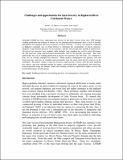Challenges and opportunities for farm forestry in Kipkaren River Catchment, Kenya
Author
Date
2004Type
Articleviews
downloads
Metadata
Show full item recordxmlui.dri2xhtml.METS-1.0.item-citation
Challenges and opportunities for farm forestry in Kipkaren River Catchment, Kenya
Abstract/
Although LVEMP has been supporting farm forestry in the Lake Victoria basin since 1999 through seedling production and training of farmers on tree planting and management, there is lack of baseline information on ecological and socio-economics of these activities. A survey was therefore conducted in Kipkaren catchment area in Nandi District to determine the sustainability of private nurseries, adoption of agro-forestry practices by local farmers, and the survival and early growth of planted trees. All private tree nurseries were sampled, while multiple stage sampling was used to select 60 farmers for oral interview using semi-structured questionnaires and for tree growth assessment. The study showed that the cost of seedling production in private tree nurseries was only Kshs. 2/= compared to Kshs. 6/= in centrally managed tree nurseries. Home gardens, multipurpose tree gardens, cash and food intercrops, and trees in cropland and pasturelands were the major farm forestry practices in the catchment. Eucalyptus saligna, Cupressus lusitanica and Grevillea robusta were the most preferred tree species, and were managed mainly for timber, construction poles, fencing posts and wood fuel. Land preparation using the shamba system and weeding resulted in significantly higher survival and growth performance in both species.

